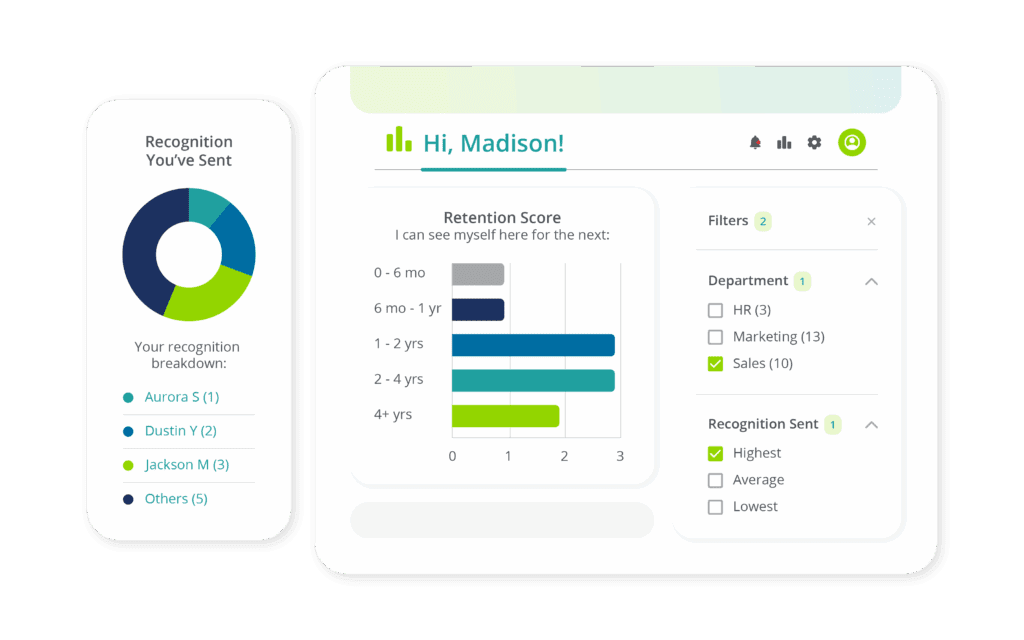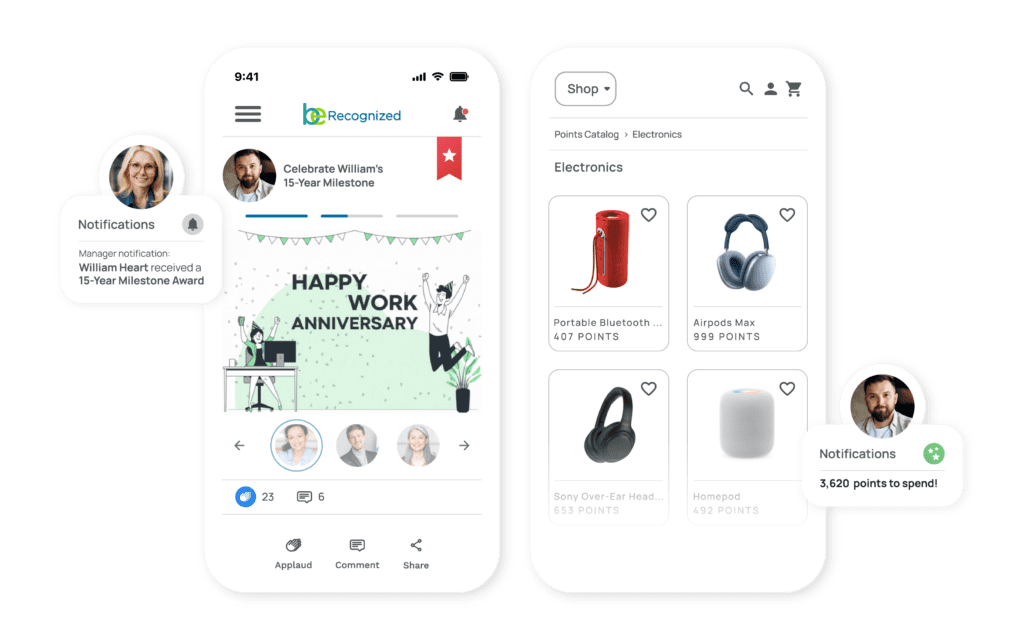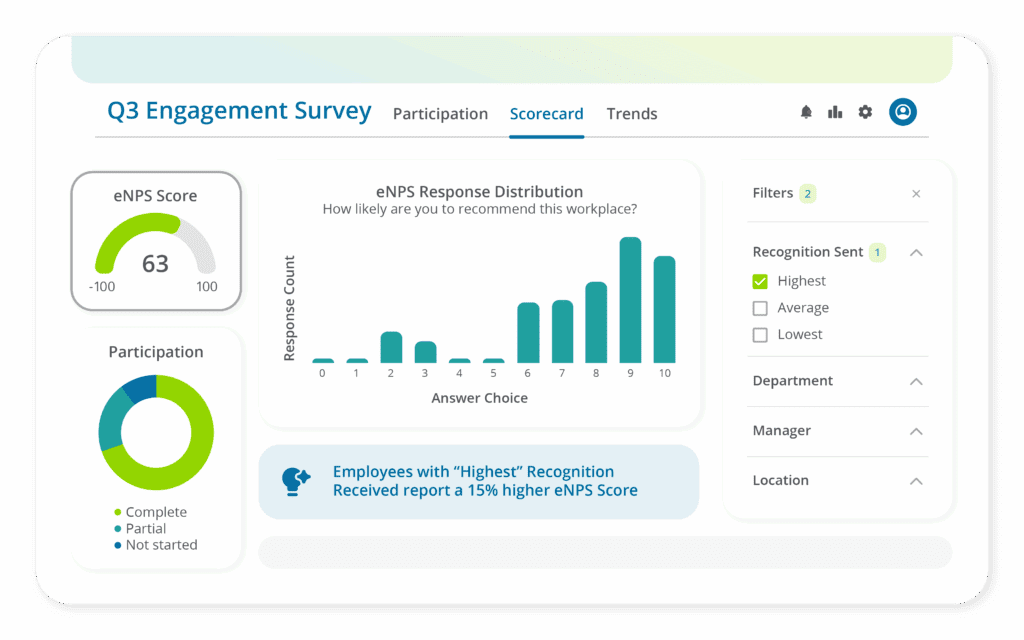October 27, 2025

Are you struggling to keep your employees motivated and committed? Engaging employees effectively is key to boosting productivity and satisfaction.
In this article, we’ll cover essential strategies, including understanding engagement levels, recognizing contributions, and fostering a positive workplace. Let’s dive into creating a more dynamic and productive environment.
Key Takeaways
- Employee engagement goes beyond job satisfaction, encompassing enthusiasm and commitment to work, which drives productivity and enhances organizational performance.
- Engaging employees leads to significant benefits, including increased productivity, lower turnover rates, and enhanced profitability, resulting in happier employees and customers.
- Implementing effective strategies such as open communication, professional development opportunities, and recognition of employee contributions is vital for fostering a positive workplace environment and sustained engagement.
Understanding Employee Engagement
Employee engagement is often misconstrued as mere job satisfaction or happiness, but it is much more than that. Gallup defines employee engagement as the involvement of employees in their work. It also encompasses their enthusiasm for their workplace.
This means that engaged employees are passionate about their roles, committed to their organizations, and dedicated to contributing to their success, ultimately leading to higher employee satisfaction and driving purpose.
Engaged employees often show high commitment and increased productivity, directly boosting organizational performance. Business executives agree overwhelmingly—92% of them, to be precise—that engaged employees perform better.
Employee engagement also enhances the workplace environment by fostering collaboration and reducing conflicts, creating a more harmonious and productive setting. Conversely, low engagement can decrease productivity and performance, underscoring the importance for organizations to prioritize engagement.
Key Benefits of Engaging Employees

Engaging employees brings tangible benefits that directly impact the bottom line and improve business outcomes. Studies suggest that organizations with higher engagement see 26% more productivity and significantly lower turnover rates.
A significant advantage of employee engagement is its effect on profitability. Key points include:
- Companies with high engagement enjoy a competitive edge in earnings per share.
- Profits can increase by 23%.
- A 10% investment in engagement can boost profits by over $2000 per employee.
Employee retention is another key benefit. Engaged employees, recognized for their contributions and growth opportunities, tend to stay longer. Factors like employee recognition and understanding of organizational success drive this higher retention, reducing turnover rates by 18% to 43%.
Happy employees lead to happy customers, as well. Engaged employees, who care deeply about their jobs, provide superior customer service and customer satisfaction. In healthcare, this can reduce patient safety incidents as much as 58%. Moreover, 72% of executives agree that engaged employees contribute to satisfied employees and happier customers, boosting shareholder value by 13% over five years.
Identifying Levels of Employee Engagement
Understanding the different levels of employee engagement helps tailor specific strategies effectively. Gallup categorizes engagement into three types: actively engaged, not engaged, and actively disengaged.
Actively engaged employees are the organization’s champions. They are deeply committed, passionate about their work, and willing to go the extra mile to drive company success. These employees are truly invested in the organization’s mission and goals, making each engaged employee a vital part of the team.
Not engaged employees:
- Are present but lack emotional investment.
- Perform their tasks but often just meet job requirements without going beyond.
- Their lack of enthusiasm can drag down productivity and team morale.
The most concerning group, however, is the actively disengaged employees. These individuals are dissatisfied and undermine their colleagues and the organization’s efforts, creating a toxic work environment and leading to higher turnover rates and absenteeism.
6 Effective Strategies to Engage Employees
Transforming your workplace into a hub of engagement requires implementing a multifaceted employee engagement strategy. Key drivers include collecting employee feedback, promoting open communication, and improving employee engagement best practices through professional development opportunities.
Regular and transparent communication fosters trust between employees and management, laying the foundation for engagement. Other key factors include:
- Recognizing and rewarding contributions to boost morale and engagement.
- Providing professional development opportunities to encourage growth and investment in roles.
- Leadership participation to demonstrate commitment and set the organization’s goals.
The following subsections delve deeper into these strategies, offering actionable insights on effective implementation.
1. Collecting Employee Feedback
Collecting employee feedback is a cornerstone of any successful engagement strategy. Encouraging employees to provide feedback gives them a voice, allowing them to share their thoughts, ideas, and suggestions on workplace culture, leadership, and business processes. This open communication not only fosters trust and team engagement but also fuels a better understanding of the employee experience.
Employee feedback surveys—such as lifecycle surveys, pulse surveys, and engagement surveys—provide valuable insights into what motivates employees, where challenges exist, and how leadership can drive positive change. The key, however, lies in transforming that data into meaningful action.
That’s where Terryberry’s Employee Engagement Platform makes a difference. Our platform streamlines the entire feedback process, from designing and distributing surveys to analyzing results and identifying actionable insights. With built-in analytics, sentiment tracking, and customizable survey templates, our platform helps organizations understand what matters most to their teams—and take data-driven steps to enhance engagement, satisfaction, and retention.
To make the most of employee feedback, companies should:
- Include open-ended questions to gather detailed, qualitative feedback.
- Analyze survey results thoughtfully to uncover patterns and areas of opportunity.
- Act on insights by creating measurable goals and fostering continuous improvement.
By leveraging an engagement platform like Terryberry’s, organizations can close the feedback loop—turning employee input into meaningful action that strengthens workplace culture and drives lasting engagement.
2. Promoting Open Communication
Open communication is essential for building and sustaining employee engagement. When managers create an environment that encourages honest, two-way dialogue, employees feel heard, valued, and more connected to the organization’s goals.
Inviting employees to share their ideas and feedback—especially during team meetings—shows that leadership genuinely values their input. Acting on those ideas not only drives innovation but also reinforces trust and belonging.
Regular company updates and transparent communication about business performance, goals, and engagement survey results help employees feel informed and included. When people understand how their work contributes to the bigger picture, motivation and alignment naturally increase.
Ultimately, transparency builds trust. Open communication between leadership and employees strengthens relationships, creates a more cohesive team, and fosters a workplace where everyone feels empowered to contribute to shared success.
3. Providing Professional Development Opportunities
Providing opportunities for professional development opportunities is one of the most effective ways to drive employee engagement. When employees see a clear path for growth, they feel more invested in their work and the organization’s success.
Managers play a crucial role in this process. By aligning job responsibilities with each employee’s unique talents and aspirations, they can help individuals reach their full potential while strengthening overall team performance.
Organizations can promote growth through a variety of initiatives—such as training programs, mentorship opportunities, workshops, and online learning courses. Supporting employees in developing new skills not only boosts engagement but also fosters loyalty and long-term retention.
Incorporating modern learning techniques like gamification and microlearning makes professional development more interactive, enjoyable, and effective.
4. Creating a Positive Workplace Environment

A positive workplace environment is crucial for sustaining high levels of engagement in highly engaged workplaces. Regularly training employees on the company’s core values reinforces their importance and helps develop a sense of purpose and belonging. Establishing employee resource groups can significantly enhance cultural involvement, playing a critical role in this process.
Implementing a strict non-discrimination policy is vital for cultivating a respectful workplace culture. Fostering relationships among team members enhances the overall atmosphere and boosts engagement. Utilizing technology fosters collaboration and recognition, improving social interaction and community feeling within the organization.
Involving employees in planning actions based on feedback enhances their sense of value. Creating a positive work environment ensures employees remain motivated, satisfied, and highly engaged.
5. Recognizing and Rewarding Employees
Recognizing and rewarding employees is fundamental to any successful engagement strategy. Meaningful recognition shows genuine appreciation for hard work and dedication, which in turn enhances motivation, morale, and overall engagement. When recognition is frequent, timely, and personalized, employees feel valued and inspired to continue performing at their best.
To keep recognition efforts effective, organizations should regularly review and refresh their programs to ensure they remain relevant and aligned with evolving employee expectations. Consistent acknowledgment—whether through peer recognition, milestone celebrations, or performance-based rewards—strengthens loyalty and drives high performance across teams.
Terryberry’s Employee Recognition Platform helps organizations bring these initiatives to life by making it easy to celebrate achievements, both big and small. With features like point-based reward systems, milestone tracking, and peer-to-peer recognition tools, Terryberry empowers companies to build a culture of appreciation where employees feel seen, valued, and motivated to excel.
By integrating recognition into everyday workflows, organizations can foster a sense of belonging and purpose—key ingredients for long-term engagement and organizational success.
6. Ensuring Work-Life Balance
Work-life balance is essential for sustaining both employee engagement and overall well-being. When employees can effectively manage their personal and professional lives, they’re more focused, productive, and satisfied in their roles. A healthy balance helps prevent burnout, reduces stress, and promotes long-term motivation.
However, today’s evolving workplace—especially with the rise of remote and hybrid models—can blur the boundaries between work and home. This makes it increasingly important for organizations to encourage flexibility, set clear expectations, and support employees in disconnecting outside of work hours.
Allowing employees to have flexible scheduling options can also help working parents, caregivers, and those pursuing education maintain balance without sacrificing performance.
Promoting work-life balance shows employees that their organization values them as people, not just as workers. This genuine care strengthens loyalty, improves morale, and contributes to healthier, motivated employees and a more engaged workforce.
Measuring Employee Engagement
Measuring employee engagement is essential for understanding your workplace culture and identifying opportunities for improvement. Regular assessments help organizations pinpoint what drives motivation, satisfaction, and performance—enabling leaders to make informed, data-driven decisions.
Annual engagement surveys provide deep insights into employees’ experiences, while pulse surveys capture real-time feedback and help track progress throughout the year. The Employee Net Promoter Score (eNPS) is another valuable metric, measuring employee loyalty and sentiment over time. Combined with performance evaluations and one-on-one check-ins, these tools offer a comprehensive picture of engagement across the organization.
Terryberry’s Employee Engagement Platform simplifies this process by offering a suite of measurement tools—including customizable surveys, eNPS tracking, and analytics dashboards—that help organizations easily collect, interpret, and act on employee feedback. The platform transforms raw data into actionable insights, helping leaders identify strengths, address pain points, and continuously improve the employee experience.
A well-rounded engagement measurement strategy should include:
- Employee Net Promoter Score (eNPS) to gauge loyalty and advocacy.
- Performance reviews to assess engagement and development needs.
- Survey methods to capture feedback on culture, leadership, and satisfaction.
- Non-survey methods such as observation, interviews, or focus groups for deeper context.
When developing surveys, it’s important to:
- Clearly define the survey audience and goal.
- Use 50–80 scientifically validated questions for accuracy and depth.
Leveraging Technology for Engagement
Technology plays a key role in modern engagement strategies. It enables organizations to communicate more effectively, gather feedback efficiently, and deliver ongoing learning opportunities that keep employees motivated and connected.
Terryberry’s integrated engagement tools support these initiatives by providing a unified platform for surveys, recognition, and feedback—all designed to enhance communication, promote transparency, and drive continuous development. By leveraging digital solutions, organizations can create a more agile, responsive, and engaged workforce.
Technology empowers organizations to:
- Facilitate better communication and real-time feedback.
- Deliver effective education and training opportunities.
- Foster ongoing growth and development.
Modern tools foster communication and continuous development, creating an engaged workforce in a modern workplace. Leveraging the right tools ensures efficient and impactful engagement efforts.
Developing an Employee Engagement Action Plan
Collecting feedback is only the first step—true engagement comes from turning insights into action. Developing a clear, structured Employee Engagement Action Plan ensures that survey results lead to measurable improvements in workplace culture.
Using frameworks like AFTER and setting SMART goals can help HR teams and managers focus on initiatives that drive meaningful change. Involving multiple stakeholders—such as department leaders and employee ambassadors—creates shared ownership and ensures a more well-rounded approach.
Tracking engagement metrics and milestones over time is crucial for assessing the plan’s effectiveness. Terryberry’s platform supports this by providing real-time data visualization, trend analysis, and progress tracking, helping organizations stay accountable and continuously refine their engagement strategy.
Creating a standardized action plan template streamlines implementation and ensures consistency across teams. With the right tools, organizations can build a culture of listening, learning, and improvement—one where engagement efforts translate into lasting results.
Summary
In summary, employee engagement is a critical component of organizational success. By understanding the different levels of employee engagement and implementing effective strategies, organizations can significantly enhance productivity, profitability, and employee retention.
Collecting employee feedback, promoting open communication, and providing professional development opportunities are key strategies to engage employees effectively. Creating a positive workplace environment, recognizing and rewarding employees, and ensuring work-life balance are also essential for sustaining high levels of engagement.
Measuring employee engagement and leveraging technology can further enhance engagement initiatives. Developing a comprehensive action plan can transform workplace dynamics and turn insights into impactful actions. By prioritizing employee engagement, organizations can create a thriving, high-performing workforce.



